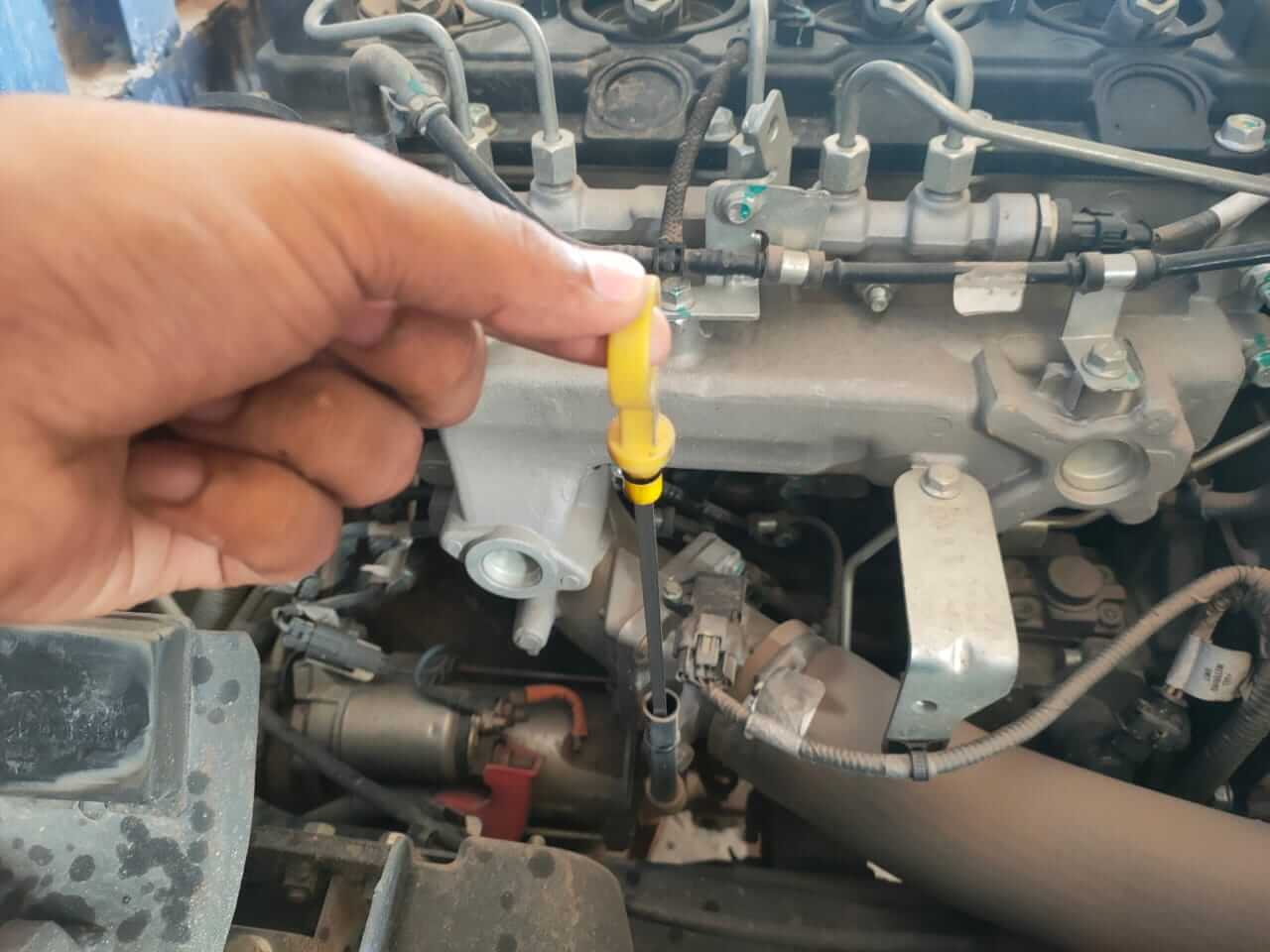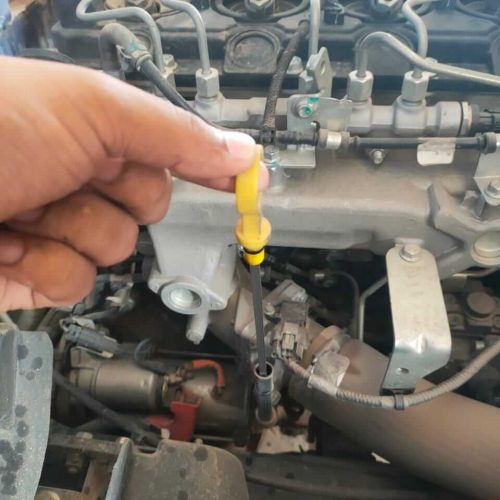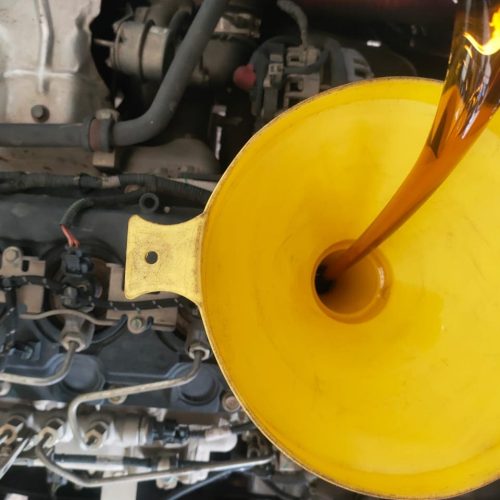Checking your engine’s oil regularly is crucial to ensure a healthy, long-lasting engine. Motor oil lubricates moving parts, reducing friction, preventing damage, and helping to cool the engine. Insufficient or dirty oil can lead to severe problems like overheating or engine failure. Fortunately, checking your oil level is a simple task most vehicle owners can do themselves using a dipstick. This thin metal rod has a brightly-colored handle and indicates how much oil is currently in your vehicle’s engine. In the next section, we’ll discuss how to use a dipstick for accurate readings.
How to Read a Dipstick
Locate your dipstick: To check your oil, first locate the dipstick – a brightly colored handle (usually yellow or orange, sometimes with an oil can symbol) – near the front or side of your engine block. The dipstick might be obscured by hoses or wires. If you have trouble finding it, consult your owner’s manual for a diagram of the engine compartment.
Engine warm or cold? Before grabbing the dipstick, it’s crucial to know whether your vehicle needs to be checked with the engine warm or cold. This is because oil expands slightly when heated. Consult your vehicle’s owner’s manual for the most accurate procedure. Many vehicles need the engine off and completely cool, while others require a warm reading. If your vehicle needs a warm reading, let the engine run briefly and then shut it off. Wait about 5-10 minutes to allow the oil to drain back to the oil pan*, and ensure you park on a level surface for the most accurate reading.
Step 1: Removing the dipstick:
Now that you’ve found the dipstick, give its brightly colored handle a firm pull upwards (a slight wiggle might be needed). Prepare a clean rag or paper towels, as the dipstick will be coated in oil. Wipe the entire length clean, since any residual oil could make your reading appear falsely high when you re-insert the dipstick.
Step 2: Re-inserting the dipstick:
With your dipstick cleaned, it’s time to check your oil level. Carefully slide the dipstick back into the same tube it came out of. Push it all the way down until fully seated. Sometimes you may feel or hear a slight ‘click’ indicating it’s in place. If not inserted completely, you might get an inaccurate reading.
Step 3: Reading the oil level:
Now comes the important part – deciphering the markings on your dipstick. These markings show if your engine oil level is adequate. You might find different variations, but here are the most common types:
ADD/MIN and FULL/MAX: Two lines or words indicating the minimum and maximum acceptable oil levels. Ideally, your oil level will be closer to the MAX line.
Two holes: The oil level should be between the holes.
Crosshatched area: The oil level should fall within this textured area.
With the dipstick removed again, hold it horizontally. The oil will leave a clear smear. If the oil level is between the markings (or within the crosshatched area), your vehicle has enough oil. If it’s at the low mark or below, it’s time to add a quart. Remember, it’s never good to overfill your oil either, so top it up slowly and recheck as you go.
Step 4: Assess oil color/condition:
While checking the dipstick, take a quick look at the oil color. Fresh motor oil is translucent amber, but darkens as it collects contaminants. If your oil is extremely dark brown or black, it’s usually time for an oil change. However, very dark or milky oil can indicate more serious engine problems… (rest of paragraph remains the same).
Related Questions About Oil Checks
How often should I check my oil? (Recommendations based on vehicle type/mileage)
While most experts recommend checking your oil around once a month, how often you need to check can vary depending on your vehicle and driving habits. Older vehicles or those with high mileage might consume oil faster, meaning more frequent checks. If you frequently drive in harsh conditions like stop-and-go city traffic, extreme heat, or tow heavy loads, your oil may break down faster, also calling for more frequent checks. Consult your owner’s manual for your manufacturer’s specific recommendations.
What kind of oil does my vehicle take? (Refer to the owner’s manual)
Using the correct type of oil is crucial for smooth engine operation. Your vehicle’s owner’s manual is the ultimate authority on this. It will specify the recommended oil viscosity – e.g., 15W-40 – and whether you should use conventional, synthetic, or a synthetic blend.
Can I add oil myself? (Basic instructions if it’s a simple top-up)
If your dipstick reading shows your oil is low, you can often top it up yourself. Locate your vehicle’s oil cap (often marked with an oil can symbol) on top of the engine. Remove the cap, and using a funnel, slowly add a small amount of the correct oil. Re-check the dipstick, adding a bit more until the oil level is within the correct range. Check frequently to avoid overfilling!
My oil looks dirty; do I need an oil change? (Explain factors affecting oil color)
Oil naturally darkens as it collects dirt and combustion byproducts, but the speed of this process depends on your driving habits, oil type, and engine condition. If your vehicle often sits for long periods or mostly makes short trips, the oil may not get hot enough to burn off contaminants. It’s good practice to follow your vehicle’s recommended oil change intervals and monitor its color. If the oil looks very dark, thick, or contains gritty particles, have it assessed at a garage.
FAQ About Dipsticks and Oil Levels
Q: What if my oil is above the full line? (Briefly mention potential issues)
Overfilling your oil can create several problems. Excess oil can create extra pressure within the engine, leading to leaks and damage to seals and gaskets. It may also cause the crankshaft to churn the oil, creating foam and interfering with proper lubrication. If you’ve accidentally overfilled your oil, it’s best to remove some to bring the level down to within the acceptable range.
Q: My vehicle burns oil quickly – what does this mean? (Possible causes)
If you find yourself frequently topping up your oil, there’s likely a reason it’s disappearing. Some common causes include:
Worn internals: Piston rings or valve seals can wear down over time, allowing oil to leak past them and be burned in the engine.
External leaks: Check for oil drips under your vehicle and look for oily residue around gaskets or seals on the engine.
Incorrect oil type: Using a thinner oil than recommended can lead to higher oil consumption.
Aggressive driving style: Hard acceleration and high RPMs can increase oil burn-off.
Q: Are there different types of dipsticks? (Mention potential variations)
While all dipsticks serve the same basic purpose, you might encounter some variations in their design. As mentioned earlier, markings might be ‘MIN/MAX’, holes, crosshatching, or other indicators. Some even feature colored zones for even easier reading. Occasionally, modern vehicles might have electronic oil level sensors instead of a traditional dipstick – your owner’s manual will tell you if this is the case.
Conclusion
Your engine relies on a sufficient amount of clean oil to operate smoothly and efficiently. Neglecting oil checks can lead to low oil levels or unnoticed contamination, both causing accelerated wear, reduced performance, and potentially catastrophic engine failure. Luckily, preventing such problems is as simple (and crucial) as reading your dipstick regularly. As you’ve seen, it takes just a few minutes, requires no special tools, and is something most vehicle owners can easily master. By making oil checks a part of your regular vehicle maintenance routine, you’re taking an important step towards extending the life of your vehicle and saving yourself from costly repairs down the road.










